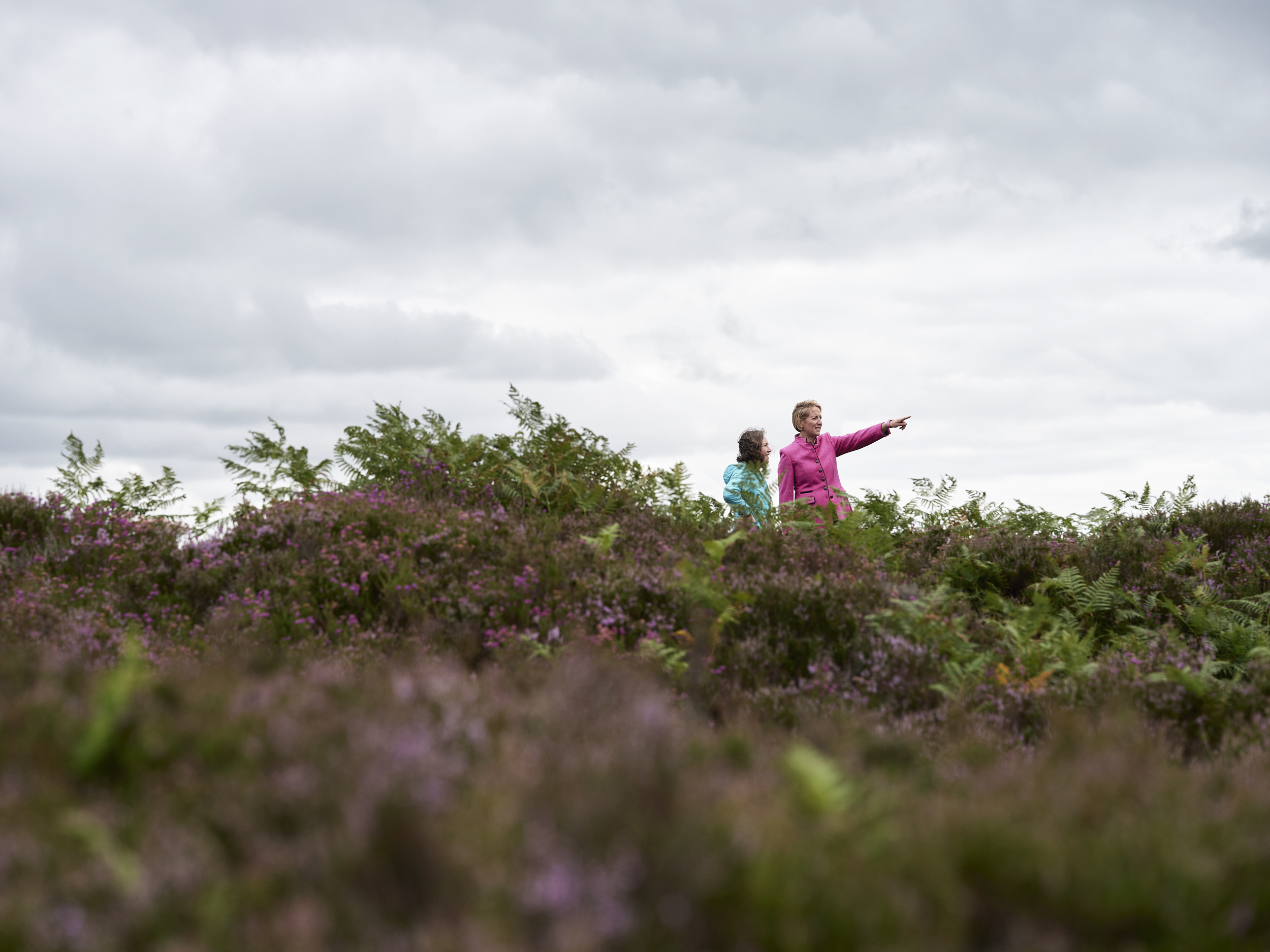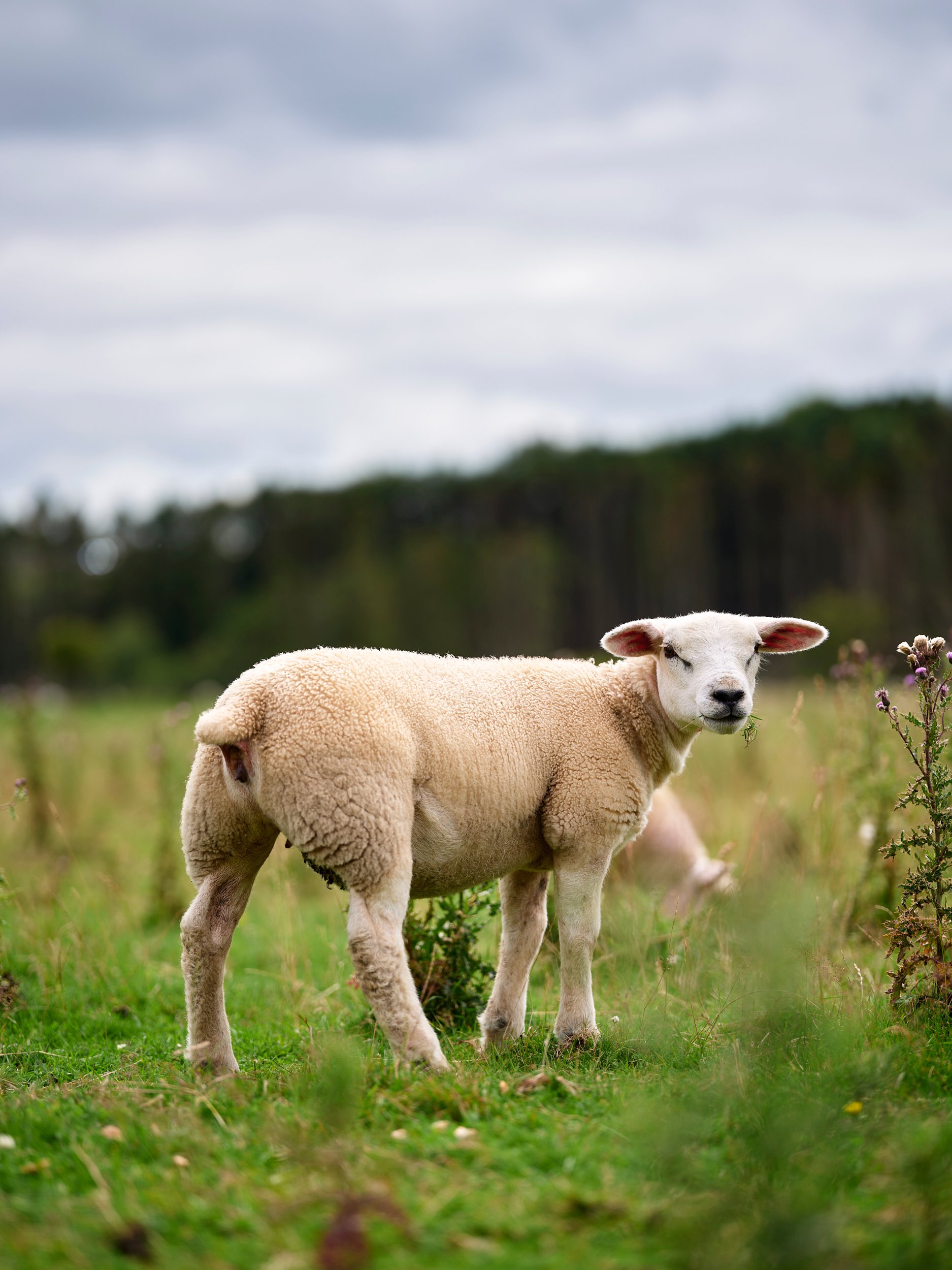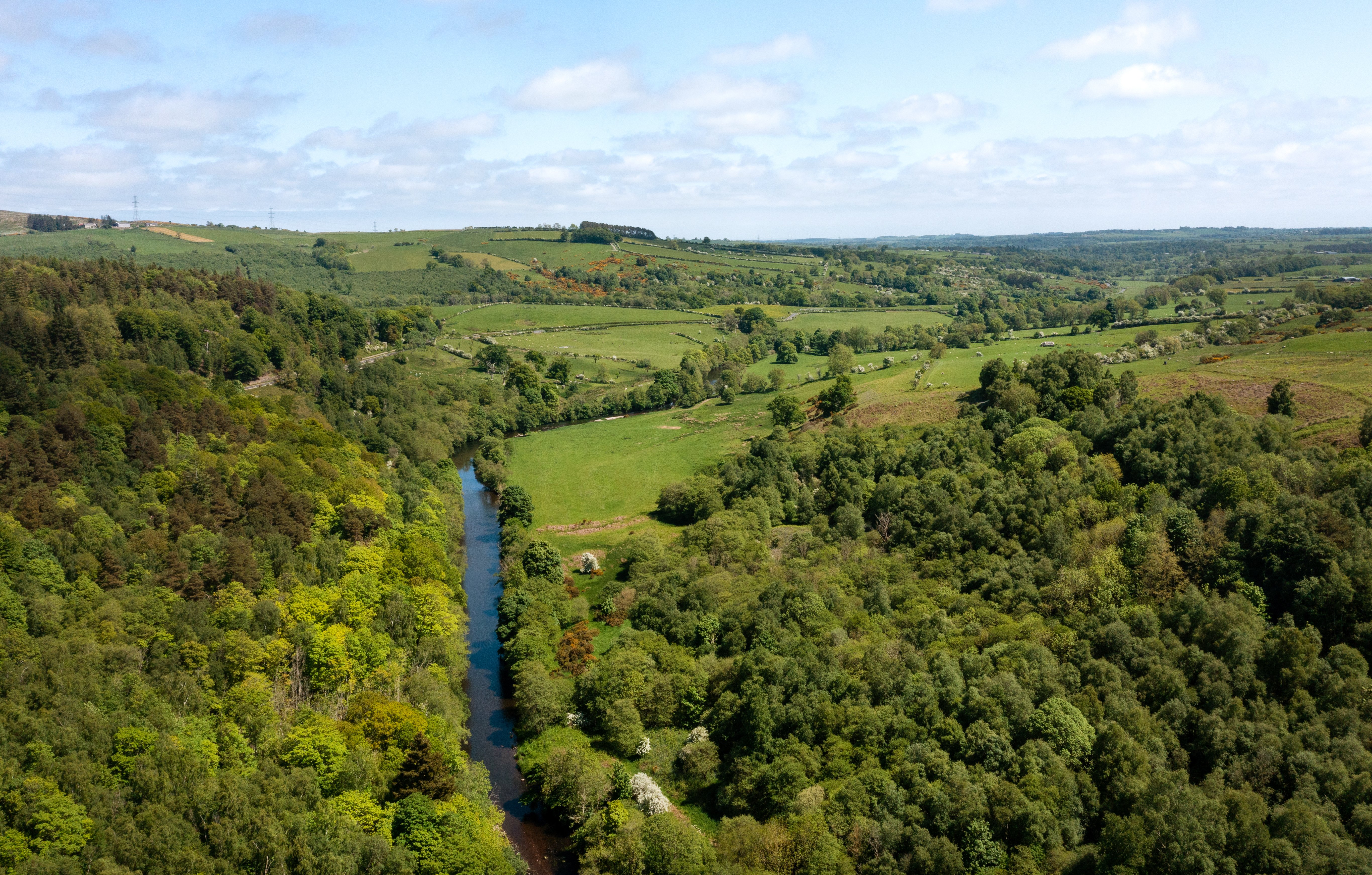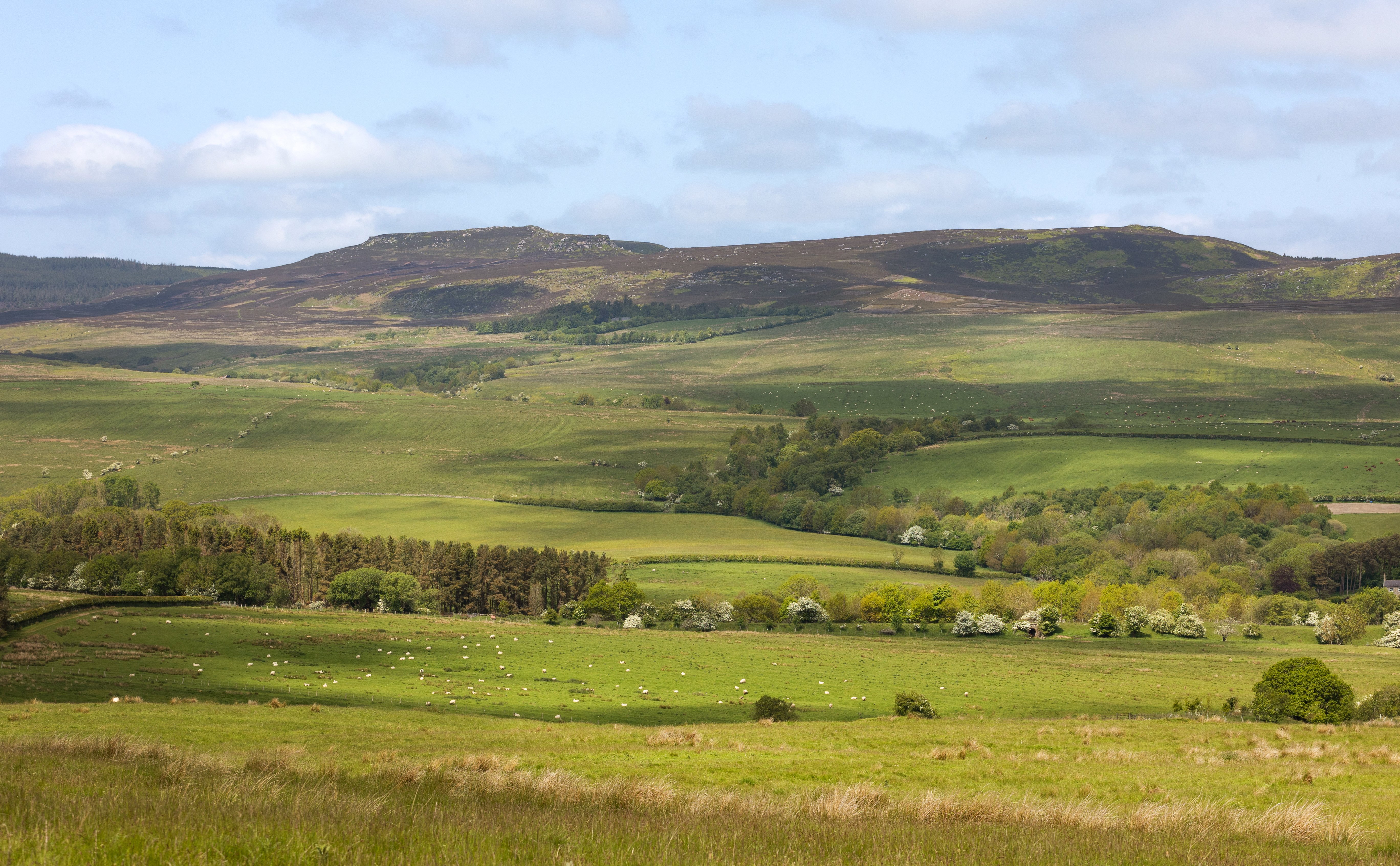The Rothbury Estate: The ground beneath our feet
Investors and businesses are waking up to the possibilities of working with landowners to fulfil their environmental obligations. Johanna Derry Hall visits The Rothbury Estate in Northumberland to find out how Knight Frank’s Rural Consultancy Team play their part

The Rothbury Estate has now been purchased by the Royal Society of Wildlife Trusts and Northumberland Wildlife Trust in the largest land sale in England in 30 years. To mark this important occasion, we take a trip to this special piece of British countryside and discover how Knight Frank’s Rural Consultancy Team is helping landowners manage and preserve such estates for generations to come.
Standing on the Simonside Hills, 360-degree views stretch as far as the Cheviot Hills on one side and the Northumbrian North Sea coast on the other. As she strides across earthy-green heather that’s just starting to turn purple, Claire Whitfield, a Knight Frank Partner working in the Rural Consultancy Team, points out the range of ecosystems in front of her – the peatland and heather moors, mixed woodland and over 4,000 acres of farmland.
“There are two burns running through the estate, an old railway line, open access footpaths, and parts of it are registered as a Site of Special Scientific Interest,” she says. “It’s a really diverse landscape.”

The environmental diversity of The Rothbury Estate
The Rothbury Estate’s 9,846 acres comprise a truly complex landscape: at the micro-level, it’s the breeding ground of endangered species like merlin and cuckoo, home to curlew, mountain bumblebees and emperor moths; at the macro-level, it’s the single largest ring-fenced carbon offsetting opportunity to come to the open market in England for decades.
In recent years the demand for country estates like these have grown, as businesses, global corporates and private individuals realise the potential that land has to offer in meeting government-mandated environmental targets.
“If UK businesses are going to fulfil their environmental requirements, as well as live up to their desire to come up with climate solutions that are serious and on a meaningful scale, landowners are the only people who are going to be able to deliver that,” says Whitfield. “The two have got to work together. And in my world, that’s an exciting opportunity.”


A collaborative approach
One that Whitfield and her team are primed to advise estates to seize. “For decades landowners have been told their main purpose is food production. Now it’s over to them to decide what purpose their land should serve and to understand the impact their land can have on people and the planet.”
The historic single-minded emphasis on using the land for food production sometimes led to what, with hindsight, were environmentally devastating outcomes, such as draining peatlands for crop growing and removal of ancient woodlands.
Now there’s a broader understanding of the value land offers; for farming, but also for environmental purposes – which, as the rich variety of countryside in the Rothbury Estate attests, is more complex than simply switching from farming to rewilding or tree planting – and for the broader social good.
“When it comes to managing natural capital, we look at what environmental assets our clients have, and then work out together how they can benefit not least themselves, but the broader environment and society generally around them,” explains Whitfield, applying the rule of what Knight Frank colloquially calls the three Ps – people, planet and prosperity – to advising landowners on how they might want to move forward in making their estates work differently.
There’s a fourth, overarching P, too. “Purpose is really at the heart of this, and the other three spin out from that,” she says.
This is the single largest ring-fenced carbon offsetting opportunity on the open market in England for decades

Improving quality of life
For some estate owners, this means the onus will be on delivering an improved environment for people to live in, “to create a place that people are drawn both to live, work, play and socialise,” Whitfield explains. “There are opportunities to connect with the NHS through green prescriptions, for example. By making it easier for people to walk in, engage with and enjoy the countryside an estate could contribute to societal change by helping to address mental health challenges.”
For others it’s partnering with suitable businesses. “Each environmental attribute can deliver a benefit to a corporate,” she explains. “Some corporates, particularly in the food industry, for example, have a real drive to improve water courses which are massively impacted by farming. Landowners can improve their water catchments by gaining funding support from food companies.
Those businesses can’t fulfil their environmental targets without the landowners and most estates couldn’t deliver the scale of improvements and environmental recovery that’s needed without the significant capital investment business offers. Everyone has a part to play in delivering an improved environment.”

Assessing land potential
For improvements to be meaningful, the potential of the land itself has to be assessed. “You have to have a baseline measurement in the first instance so you can demonstrate what you’ve improved and what you haven’t,” Whitfield says, pointing to work she is doing on one estate to gain a baseline of the potential for carbon sequestration through peatland restoration.
“It’s a very scientific process which requires detailed inputs with regards to cropping, fertiliser usage, fuel usage, water management [...] it’s not an overnight process,” she says, but working with land is in many ways about legacy-making.

Legacy-making through land management
For whoever takes on ownership of the Rothbury Estate – continuously owned until now by one family for 650 years – and indeed for the owner of any estate, the challenge is to find the balance between the environment, the community, and producing food now, so that the land is cared for over the long-term.
“We have what the generations past did behind us,” she says. “What we do is provide the knowledge landowners need on how to own and manage land in the context of the wider challenges we face now. What we decide to do today, we are passing on to the next generation for the future.”
The Rothbury Estate has a guide price of £35,000,000. Any enquiries, please contact will.matthews@knightfrank.com. Or, explore the full breadth of our rural services in the UK at knightfrank.co.uk/rural-property.